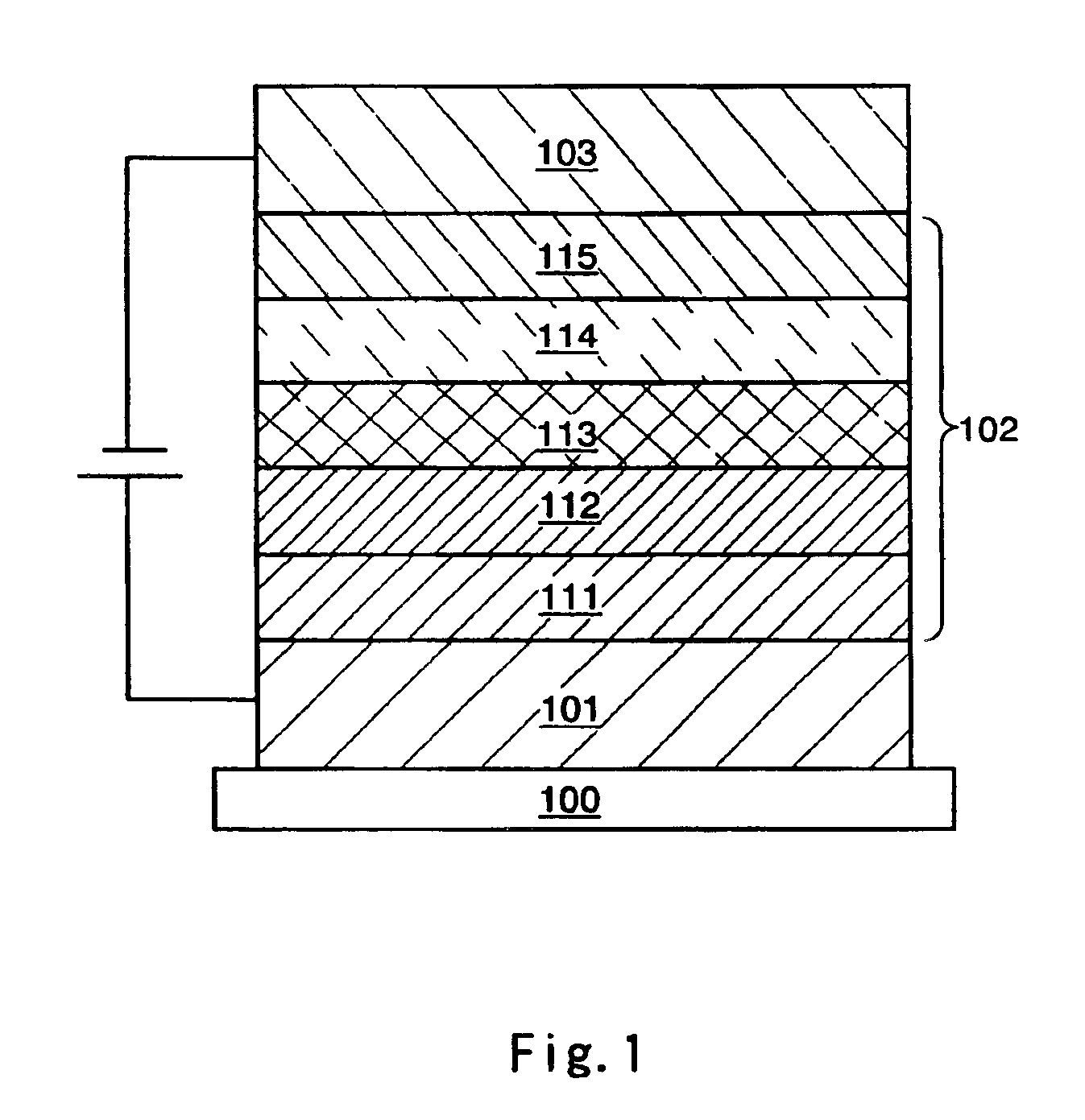Organometallic complex and light-emitting element containing the same
a technology of organic complexes and light-emitting elements, which is applied in the direction of discharge tube luminescnet screens, writing aids, natural mineral layered products, etc., can solve the problems of large number of process steps, very few applicable kinds of ligands, and foregoing ligands, etc., to achieve excellent heat resistance properties, easy to synthesize ligands, and good yield
- Summary
- Abstract
- Description
- Claims
- Application Information
AI Technical Summary
Benefits of technology
Problems solved by technology
Method used
Image
Examples
embodiment 1
[Embodiment 1]
[0035]Hereinafter, a method for synthesizing an organometallic complex according to the invention will be explained as one mode of the present invention.
[0036]A ligand represented by general formula 12 is synthesized by synthesis scheme a-1.
[0037]In general formula 12 and synthesis scheme a-1, R1 to R5, each of which may be the same or different, are individually a hydrogen atom, a halogen atom, a lower alkyl group, an alkoxy group, an acyl group, a nitro group, a cyano group, an amino group, a dialkylamino group, a diarylamino group, a vinyl group which may have a substituent, an aryl group which may have a substituent, or heterocyclic group which may have a substituent. Each pair of R1 and R2, R2 and R3, and R4 and R5 may be bonded each other to form an aromatic ring.
[0038]As a lower alkyl group, a methyl group, an ethyl group, an n-propyl group, an isopropyl group, an n-butyl group, a sec-butyl group, a tert-butyl group, a hexyl group, and the like are nominated, a...
embodiment 2
[Embodiment 2]
[0050]In this embodiment, as one aspect of the present invention, a light-emitting element containing the organometallic complexes according to the present invention will be explained with reference to FIG. 1.
[0051]As shown in FIG. 1, a first electrode 101 is formed over a substrate 100, and a layer containing light-emitting substances is formed over the first electrode 101, then, a second electrode 103 is formed thereover.
[0052]As materials for the substrate 100, anything can be used, which is used for the conventional light-emitting element, for example, glass, quartz, transparent plastics, or the like can be used.
[0053]In this embodiment, the first electrode 101 serves as an anode, and the second electrode 103 serves as a cathode.
[0054]Therefore, the first electrode 101 is formed by anode materials. As materials for the anode, metals having large work functions (at least 4.0 eV), alloys, compounds having electrical conduction properties, and mixture of these materia...
synthesis example 1
[0071]A method for synthesizing the organometallic complex (abbreviated Ir(pcz)2(pic)) represented by structural formula 7 according to the invention will be explained in this synthesis example 1.
[Step 1: Synthesis of Ligand (Hpcz)]
[0072]In 40 ml of o-dichlorobenzene as solvent, 3.94 g of carbazole, 7.26 g of 2-iondopyridine, 13.10 g of potassium carbonate, 3 g of copper powder, and 0.62 g of 18-crown-6-ether were mixed and refluxed under a nitrogen atmosphere for 10 hours. Thereafter, copper and inorganic salts were removed, and the mixture was purified by column chromatography. Consequently, ligand Hpcz (9-(2-pyridyl)carbazole) was obtained (opal powder, the yield: 93%). The following is the synthesis scheme (b-1).
[0073]Further, IR spectrum of the obtained product showed the result which suggests that N—H stretching vibration (3845 cm−1) derived from carbazole was disappeared and the reaction was progressed.
[Step: 2 Synthesis of Dinuclear Complex ([Ir(pcz)2CL]2)
[0074]In mixture o...
PUM
| Property | Measurement | Unit |
|---|---|---|
| internal quantum efficiency | aaaaa | aaaaa |
| work functions | aaaaa | aaaaa |
| work functions | aaaaa | aaaaa |
Abstract
Description
Claims
Application Information
 Login to view more
Login to view more - R&D Engineer
- R&D Manager
- IP Professional
- Industry Leading Data Capabilities
- Powerful AI technology
- Patent DNA Extraction
Browse by: Latest US Patents, China's latest patents, Technical Efficacy Thesaurus, Application Domain, Technology Topic.
© 2024 PatSnap. All rights reserved.Legal|Privacy policy|Modern Slavery Act Transparency Statement|Sitemap



